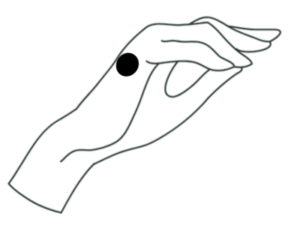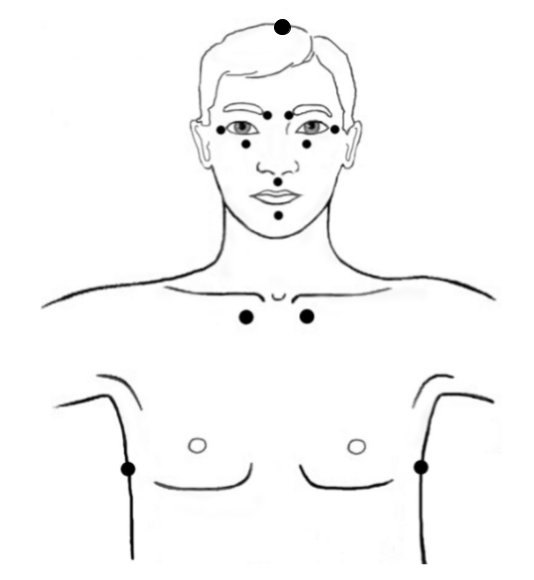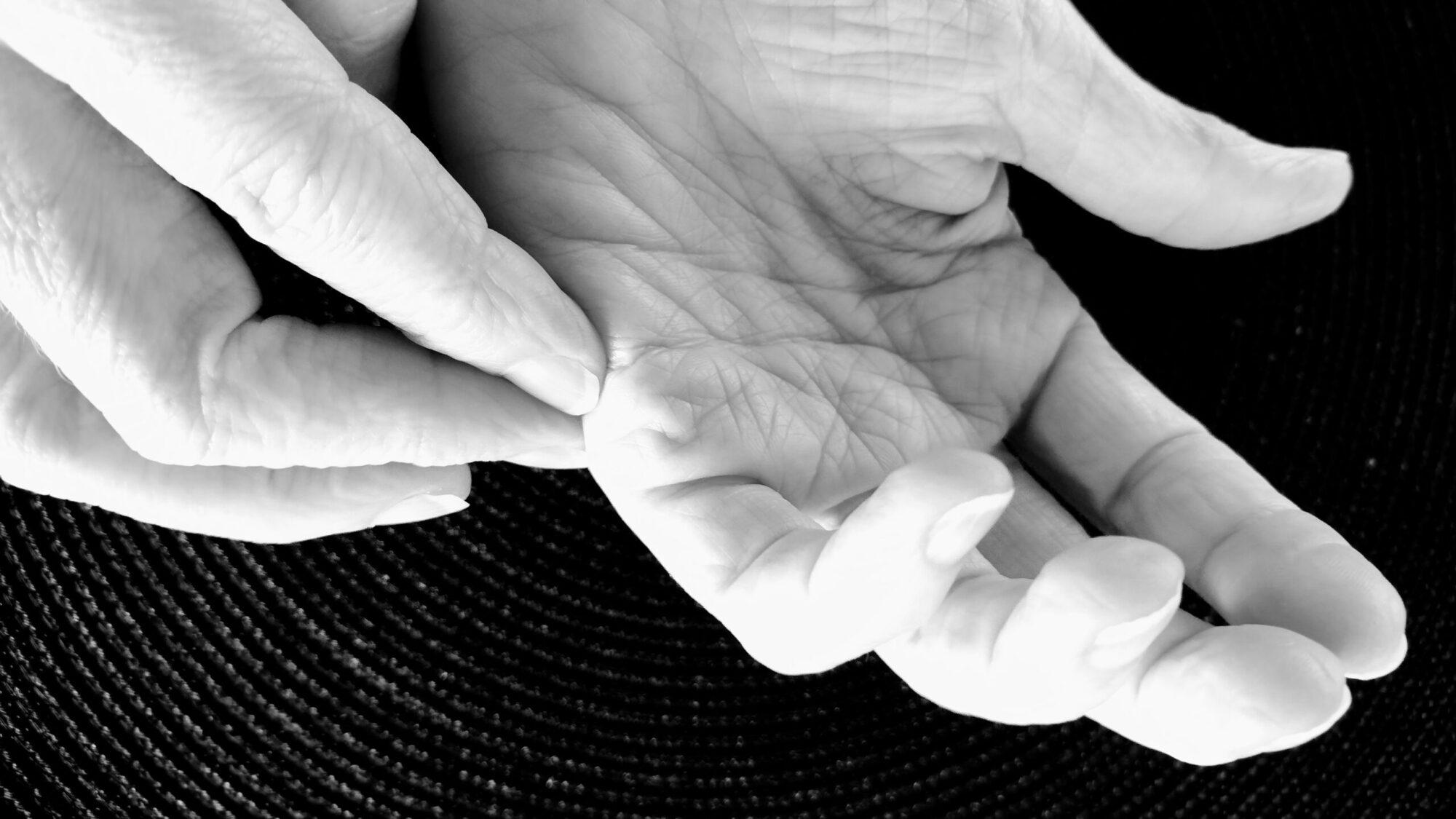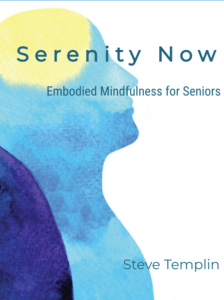I was introduced to Tapping in 1983 by my friend and chiropractor Dr. Craig Williams. In those early days of Tapping it was called Thought Field Therapy, or TFT.
I found the process to be very helpful with phobias, addictive behaviors, anxiety, and especially for addressing the emotional origins of chronic pain. We weren’t doing psychological counseling, we were balancing energy by tapping acupuncture points with our fingers.
Over the years Tapping has evolved, been simplified, and slowly but surely, popularized. Today, it’s widely known as Emotional Freedom Technique, EFT, or just plain Tapping.
In this post I’ll share my current Tapping protocol for your personal use, but first some of the history of tapping and my personal backstory for how I’ve arrived at the current protocol.
The Origins of Tapping
The original Taping technique, Thought Field Therapy (TFT) was developed by psychologist Roger Callahan, who had been introduced to acupuncture by his chiropractor.
One day Dr. Callahan was working with Mary who was a client with a water phobia. At some point during the session she mentioned that she felt her fear of water in her stomach. Dr. Callahan, knowing that there was a stomach acupuncture point under the eye, on a whim suggested to Mary that she tap on that point with a couple of her fingers.
After, a few seconds of tapping she mentioned that her fear was gone. Yep, her water phobia had been resolved by a few taps under her eye. This was a dramatic first in Dr. Callahan’s experience, especially considering that he had been working with Mary using conventional counseling methods for over a year.
TFT was based on the idea that our mental and emotional experience was organized in fields of energy. These energy fields could become imbalanced by emotional trauma and produce symptoms that were both emotional and physical.
And it was through the stimulation of acupuncture points, through touch and tapping rather than needling, that the energy could be rebalanced and symptoms could be reduced or resolved.
Years later an engineer named Gary Craig refined and simplified the tapping process and called it Emotional Freedom Technique (EFT).
There are a number of studies showing the efficacy of Tapping. Here’s a study that focuses on psychological trauma and veterans, along with links to a number of other related studies.
While techniques like Tapping definitely have their place, it’s important to remember that your body itself is wired to heal and is just waiting for an invitation to do so.
Healing Techniques vs Spontaneous Healing
My use of Tapping has evolved over the years as I have become more aware of the body’s innate potential for healing. Actually, the body is always trying to heal, emotionally and physically, but old ingrained habits of mind and body can get in the way.
Our body is the ultimate healing technique, if we only knew how to access its healing potential, or better yet, how to get out of our own way and allow the body to do its thing.
The biggest block to healing is that we’re disconnected from, divorced from the experience of our body and its felt experience. This is a theme that you hear repeated over and over on this blog.
Said another way, when we’re embodied, connected consciously to our body’s felt experience, in a caring, nonjudgmental fashion, we shift into a healing mode.
We shift spontaneously, both neurologically and biochemically, in ways the Mayo Clinic could never duplicate.
Is Embodied Consciousness the Answer?
Personal experience has shown me that knowing how to live more consciously in one’s own skin, with heart …. and that means having a felt connection with your heart …. is what turns on this spontaneous healing potential.
No, it’s not a perfect system, but it is something to shoot for because it’s so very helpful. It’s a very solid foundation for self-healing, neurologically and biochemically, and paves the way for the techniques we use to be even more dependably effective.
What’s become increasingly obvious is that our body is a quantum healing instrument. Your body doesn’t just obey the laws of classical physics, it can be shifted into the quantum realm where new possibilities for healing emerge.
How you use your consciousness, your attention, is the key to making this positive shift.
What You Resist Persists
It’s counter intuitive and ironic that what we resist, what we don’t want to feel or accept, and especially what we judge as undesirable, not only doesn’t go away, but it tends to persist or intensify.
When it comes to feelings, especially resisted feelings, they not only fuel the subjective experience of us being stuck and suffering, they’re also translated into neurological and biochemical states that underlie and perpetuate our symptoms.
I’ve discovered a number of therapeutic approaches over the years that demonstrate that a change in consciousness alone, a shift in how we use our attention, produces healing results emotionally and physically.
These are the approaches that have helped me the most to stop resisting, to start accepting, and most importantly to start trusting more in the natural flow of life.
I’ll very briefly review my favorite attention shifting processes here because they’re necessary for fully understanding and using my current Tapping protocol effectively.
Focusing is a process that teaches that feelings, if noticed in a curious and caring way (as opposed to my original default setting of ignoring or dreading them), guide me forward towards more emotional and physical ease, greater understanding, and more creative solutions. My Focusing mentors called this forward movement the gift of grace. Focusing helps me to trust more and more in the process of being alive in an embodied way.
Open Focus is another process that helps us to trust living more comfortably in our own skin with whatever feelings are active in the moment. Open Focus shows that how we notice our feelings makes all the difference in the world. Noticing our felt experience as sensations, or energy that’s occupying three-dimensional space in our body balances brainwaves, the autonomic nervous system, emotional states, and helps to relieve chronic pain.
Internal Family Systems offers a novel perspective on the structure of our psyche. It suggests that we’re composed of many parts, that we experience as challenging feelings or behaviors, that are ultimately in service to our true Self. The resulting problem is that we often mistake the parts, e.g. the shy part, or the angry part, or the addicted part, as our real Self, which is simply not the truth.
When we learn how to offer the parts/feelings/behaviors acceptance, by noticing them in our bodies in an embodied, caring way they begin to transform themselves so that we’re less burdened by troubling emotions, or parts, and more free to be our true Self.
Polyvagal Theory teaches us about the healing power of kind, heart-centered engagement with others as well as with ourselves. Again, when we connect with ourselves, our bodily felt feelings in an accepting way we create an experience of safety, and safety is the balm that heals.
HeartMath processes like Heart Focused Breathing and others put all of the above approaches into perspective for me. Boiled down, embodied heart felt care, or love, is the essential healing ingredient.
All of the above approaches offer options for how to stop judging and resisting ourselves, and how to start accepting, forgiving, and loving ourselves. And this is all accomplished in the felt terrain of the body as opposed to the mental realm of thinking. The shift is from head to heart.
A few essential points to remember about the tapping protocol:
1. Remember that this process helps you, your real self, to form a trusting relationship with your emotionally felt parts. In this process you’re becoming more identified with your real self and less identified with your emotional parts. The real you is becoming more stable while your parts are allowed to relax, flow, and be transformed.
2. When we tap we’re not tapping to get rid of feelings because that would be a form of judgment or resistance that only intensifies the feelings. We’re tapping to lubricate our body’s natural capacity for flow and transformation. The more we tap with this inner relationship building attitude, the more trust, safety, and ease we create.
3. Tapping is often the technique of choice when an experience is overly intense, complex, or overwhelming. When feelings are more subtle or more navigable then even simpler processes, like Heart Focused Breathing, may be more ideal.
Here’s the Tapping Protocol. What follows is a guide to Tapping for Anxiety or for whatever else of a stressful or traumatic nature may be disturbing your peace of mind or body.
The Tapping Protocol
1. Identify your issue and notice where and how you feel it in your body.
(Noticing the feelings in your body is the most important step. Noticing curiously and respectfully with heart, as opposed to wanting a feeling to go away, will activate your nervous system for healing and make the process of change more comfortable and effective.)
2. Rate the intensity of what you feel on a scale of 0-10 where zero is an absence of feelings and ten is extreme.
3. Tap the point on the side of your hand continuously while repeating the following statement three times:
hand continuously while repeating the following statement three times:
(“Even though a part of me is feeling _______________________ (fill in the blank with the best fitting feeling description, such as sad, angry, guilty, fearful, etc.) my real self is present in a caring way”.)
4. Starting at the top tap the points on the body diagram 8-10 times while repeating a reminder phrase on each point that reminds you of how your issue feels.
the points on the body diagram 8-10 times while repeating a reminder phrase on each point that reminds you of how your issue feels.
(For example, you could say, “dull heartache in my chest”, “suffocating sadness”, or “fear that makes me clench my jaw”. The main point is to describe the felt emotional content of your experience as accurately as you can. Point locations: top of head, inner eyebrow, outside of eye, under eye, under nose, under lip, under collarbone, under armpit)
5. You can tap through the sequence of points three full times.
(Then re-evaluate for any changes, either in the quality of what you’re feeling or its intensity. Change can also present as a shift in perspective or outlook, or as increased intuition or creative insight. You can repeat these steps on a daily basis to invite more trust, safety, and neurological order.)
6. If you notice a change or shift in how your issue feels take a minute to savor the feel of it no matter how large or small.
(You can also tap through the points again to reinforce the more positive feelings or outlook that are emerging. For example, while tapping the points you can include more supportive language like, “more ease …. or more confidence …. or greater happiness”, to help anchor the positive change.)
Once again, remember that this process helps you, your real self, to form a trusting relationship with your emotionally felt parts. In this process you’re becoming more identified with your real self and less identified with your emotional parts. The real you is becoming more stable and available while your parts are allowed to relax, flow, and be transformed.
Here’s a printable PDF of The Tapping Protocol.
While Tapping is relatively easy to learn, it takes quite a bit of practice to develop confidence and trust in the process. So my suggestion is to practice and then to practice some more, with a relaxed, curious, or even playful attitude.


 Steve is a retired Doctor of Oriental Medicine, Acupuncture Physician, and HeartMath Trauma-Sensitive Certified Practitioner with over 35 years of clinical experience in the fields of Energy Medicine, Energy Psychology, and Biofeedback.
Steve is a retired Doctor of Oriental Medicine, Acupuncture Physician, and HeartMath Trauma-Sensitive Certified Practitioner with over 35 years of clinical experience in the fields of Energy Medicine, Energy Psychology, and Biofeedback. 